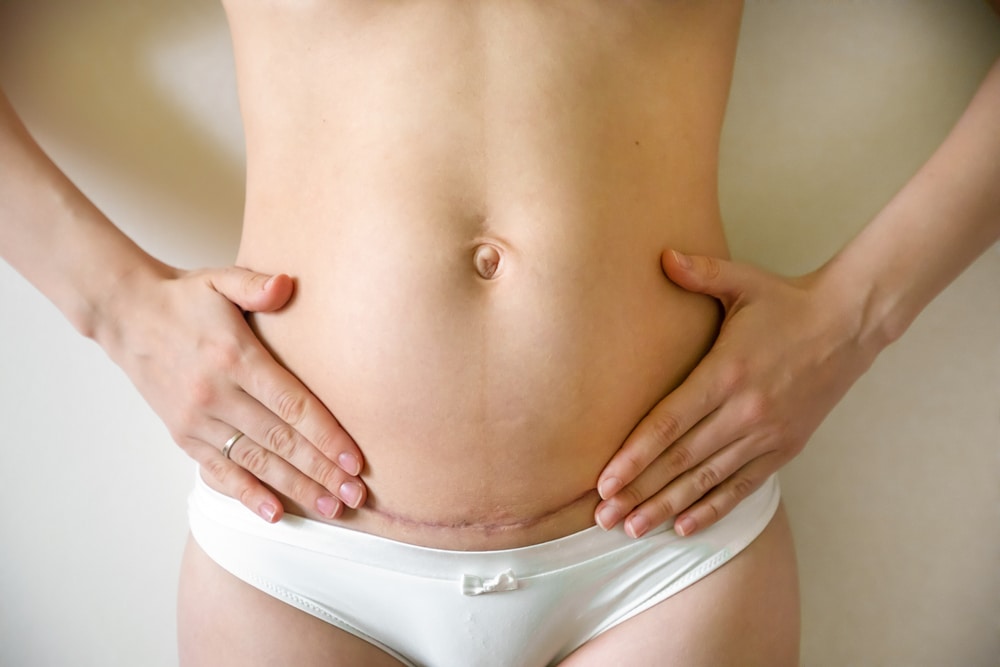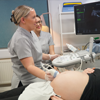April is #CaesareanAwarenessMonth. To all the mums who had a C-section, whether it be elective or emergency, this month is to celebrate what your body went through!
A Caesarean (C-section) is a major operation and is usually only done if it is the safest option for you and your baby. A cut is usually made across your stomach, just below your bikini line. Around 1 in 4 pregnant women in the UK have a C-section birth.
C-sections often get a bad rap. As though they are the “easy way out”. Which of course is not true — especially when medically necessary and involving more risks.

Why are Caesareans carried out?
A caesarean may be recommended as a planned (elective) procedure or done in an emergency if it’s thought a vaginal birth is too risky.
Planned caesareans are usually done from the 39th week of pregnancy.
A caesarean may be carried out because:
- your baby is in the breech position (feet first) and your doctor or midwife has been unable to turn them by applying gentle pressure to your tummy, or you’d prefer they did not try this
- you have a low-lying placenta (placenta praevia)
- you have pregnancy-related high blood pressure (pre-eclampsia)
- you have certain infections, such as a first genital herpes infection occurring late in pregnancy or untreated HIV
- your baby is not getting enough oxygen and nutrients – sometimes this may mean the baby needs to be delivered immediately
- your labour is not progressing or there’s excessive vaginal bleeding
If there’s time to plan the procedure, your midwife or doctor will discuss the benefits and risks of a caesarean compared with a vaginal birth.
Asking for a Caesarean…
Some women choose to have a caesarean for non-medical reasons.
If you ask your midwife or doctor for a caesarean when there are not medical reasons, they’ll explain the overall benefits and risks of a caesarean to you and your baby compared with a vaginal birth.
If you’re anxious about giving birth, you should be offered the chance to discuss your anxiety with a healthcare professional who can offer support during your pregnancy and labour.
If after discussing all the risks and hearing about all the support on offer you still feel that a vaginal birth is not an acceptable option, you should be offered a planned caesarean. If your doctor is unwilling to perform the operation, they should refer you to a doctor who will.
Recovering from a Caesarean…
Recovering from a caesarean usually takes longer than recovering from a vaginal delivery.
The average stay in hospital after a caesarean is around 4 days, compared with an average of 2 days for a vaginal birth.
You may experience some discomfort in your tummy for the first few days. You’ll be offered painkillers to help with this.
When you go home, you’ll need to take things easy at first. You may need to avoid some activities, such as driving, until you have had your postnatal check-up with the doctor at 6 weeks.
The wound in your tummy will eventually form a scar. This may be obvious at first, but it should fade with time and will often be hidden in your pubic hair.
Future pregnancies after a Caesarean…
If you have a baby by caesarean, it does not necessarily mean that any babies you have in the future will also have to be delivered this way.
Most women who have had a caesarean section can safely have a vaginal delivery for their next baby, known as vaginal birth after caesarean (VBAC).
But you may need some extra monitoring during labour just to make sure everything is progressing well.
Some women may be advised to have another caesarean if they have another baby.
This depends on whether a caesarean is still the safest option for them and their baby.
Whether vaginal or caesarean each and every which way baby is delivered is a miracle…and is still birth.
https://www.nhs.uk/conditions/caesarean-section/
For more information, read the Royal College of Obstetricians and Gynaecologists leaflet on birth options after previous caesarean section.













 Packages & Prices
Packages & Prices  Important Info & Policies
Important Info & Policies  Your Scan
Your Scan